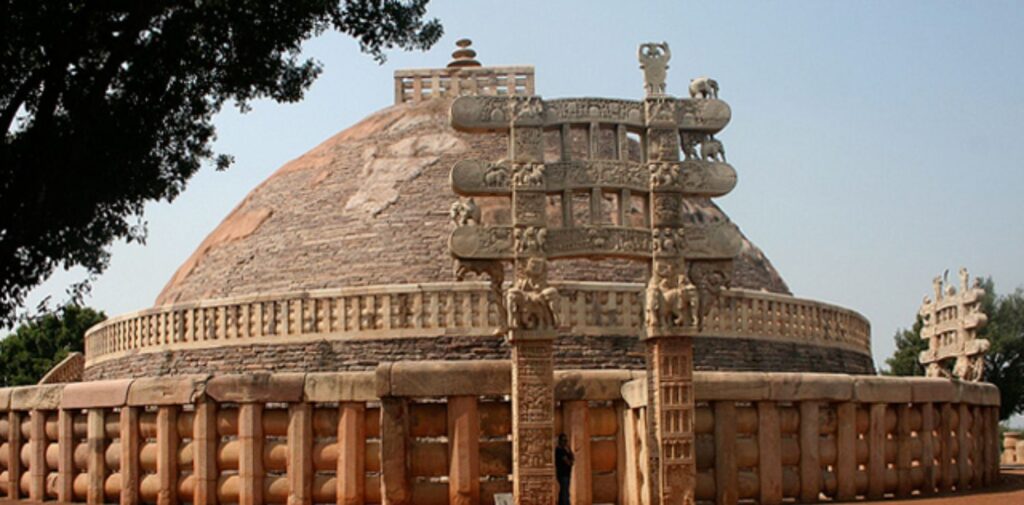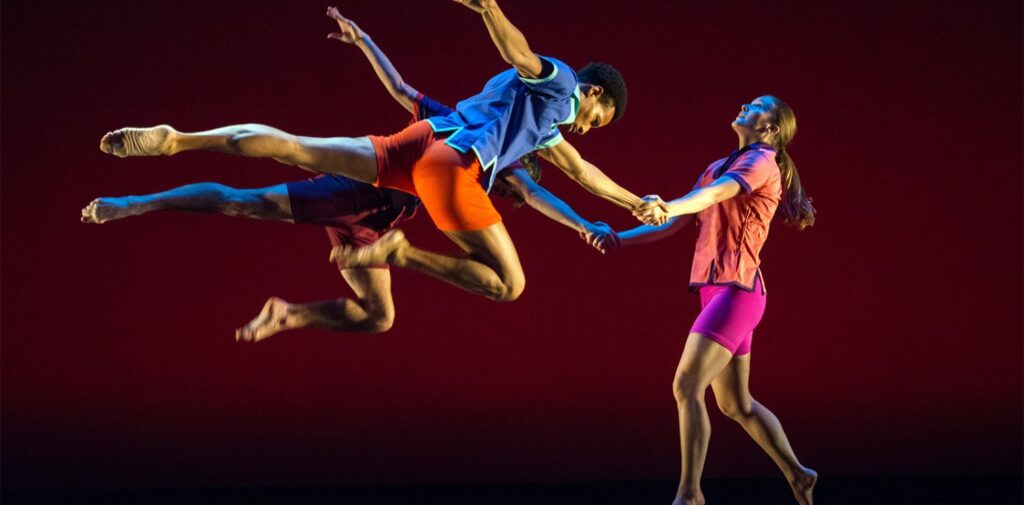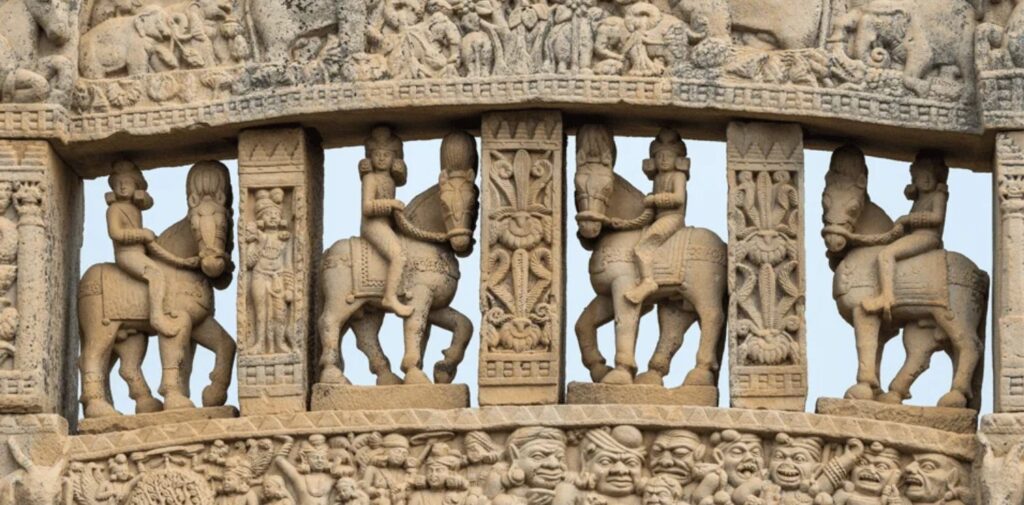The Gupta Empire, which flourished in ancient India between approximately 320 and 550 CE, is often referred to as the “Golden Age” of India due to its significant contributions to art, science, literature, and culture. During this period, the Gupta rulers, especially Chandragupta I, Samudragupta, and Chandragupta II, were strong patrons of the arts and culture. Their encouragement of creativity and intellectual growth not only transformed Indian society but also influenced art and culture far beyond the empire’s borders. The Gupta Empire’s support for the arts had a profound impact on the social fabric, cultural development, and legacy of India.
The Gupta rulers viewed art as a means to elevate society, express religious devotion, and preserve their cultural heritage. The empire’s patronage of the arts touched nearly every facet of life, including sculpture, painting, architecture, literature, and even dance and music. This cultural boom under the Guptas was not just for the elite; it trickled down to various layers of society, creating lasting impacts on the structure and fabric of Indian civilization.

The Rise of Indian Sculpture and Architecture
Under the Gupta Empire, there was a notable rise in the development of Indian sculpture and architecture. The Gupta rulers’ support led to the creation of many magnificent works that are still admired today for their beauty and craftsmanship. The sculptures from this period are characterized by graceful forms, detailed features, and intricate designs that reflect the empire’s religious and cultural richness.
One of the most significant contributions was the development of stone sculpture. The Gupta period saw the creation of intricate statues of Hindu gods and goddesses, such as Vishnu, Shiva, and Lakshmi. These sculptures were often made with great attention to detail, highlighting the divine beauty of the deities. The Gupta style of sculpture is recognized for its calm expressions, elegant posture, and a sense of balance and proportion that became the standard for future Indian art.
Architecture during the Gupta Empire also saw remarkable advancements. The period saw the construction of beautiful temples and monasteries, with the most notable examples being the famous rock-cut temples at Ajanta and Ellora. These temples were adorned with elaborate carvings and murals that depicted scenes from religious texts, illustrating the empire’s strong connection to Hinduism and Buddhism. The use of shikhara (a distinctive type of tower) and garbhagriha (sanctum sanctorum) in temple architecture became a defining feature of Gupta religious architecture and influenced temple building in India for centuries to come.
The Flourishing of Literature and Intellectual Growth
The Gupta Empire is often considered a golden age for Indian literature. Under the patronage of Gupta rulers, literature not only flourished but was also deeply intertwined with the religious and cultural life of the time. Sanskrit literature saw significant development during this period, as the Gupta rulers and their court encouraged the production of texts in the language.
One of the most famous figures in Gupta literature was the playwright and poet Kalidasa, who is often regarded as one of the greatest writers in Indian history. His works, such as the Shakuntala and Meghaduta, are known for their deep emotional expression, natural beauty, and complex characterizations. These plays and poems reflect the cultural and spiritual life of the Gupta period and continue to be celebrated for their literary quality.
In addition to Kalidasa, several other scholars, poets, and playwrights emerged during the Gupta Empire. The Puranas, ancient texts that recorded mythological stories and historical events, were compiled and edited during this time. These texts are crucial to understanding the religious and social customs of ancient India and remain an essential part of Hindu religious literature.
The Gupta Empire also made significant contributions to the field of science and mathematics. Mathematicians such as Aryabhata and Brahmagupta laid the groundwork for important discoveries in mathematics and astronomy, including the concept of zero, the place-value system, and accurate calculations of pi. These contributions had a lasting impact on not just Indian society but on the entire world, influencing future developments in mathematics and science.

The Impact on Music, Dance, and Performance Arts
The Gupta Empire’s patronage extended to music, dance, and other performance arts as well. Music and dance had long been an essential part of Indian culture, but it was during the Gupta period that these art forms reached new heights of sophistication. The Guptas supported the development of both classical music and dance, and many new forms emerged that would go on to influence later traditions.
The Gupta period saw the rise of classical music, with an emphasis on ragas (melodic scales) and talas (rhythmic cycles). Music was considered an essential part of religious rituals and courtly life. The emperors and their courts sponsored the best musicians and dancers, allowing them to perform at royal gatherings. This patronage helped to refine these art forms, contributing to their continued prominence in Indian culture.
Similarly, dance in the Gupta period flourished with the rise of classical dance forms like Bharatanatyam, which later became one of the most prominent classical dance forms in India. These dances were often performed in temples as part of religious rituals, but they also became a form of entertainment in royal courts. The dances were accompanied by music and storytelling, and they celebrated the beauty of the human body, divine love, and the religious mythology of India.
Social Changes and Cultural Integration
The Gupta Empire’s patronage of the arts also had significant social and cultural effects. The flourishing of literature and the arts helped create a more unified cultural identity, linking different regions of India under shared traditions and values. The Gupta period saw a rise in cultural exchanges between different regions, especially through trade, which further helped spread Gupta art and culture.
One of the most important cultural impacts of the Gupta Empire was the increased role of women in the arts. While women’s roles in ancient India were often restricted, the Gupta period saw women emerging as poets, scholars, and performers. Some women from prominent families were known to have participated in literary gatherings and even composed poetry. The Gupta Empire allowed for more cultural and social integration, where ideas and artistic expression flowed more freely between different classes, castes, and regions.
The Gupta Empire also encouraged the spread of religious and philosophical ideas through its patronage of the arts. Temples were not only places of worship but also centers of learning and artistic expression. This allowed for a blending of religious practice with artistic creation, as seen in the elaborate murals and sculptures in temples that depicted both Hindu gods and Buddhist teachings. The cultural integration promoted by the Guptas created an environment where art, religion, and intellectual pursuits were closely intertwined.

Lasting Legacy of Gupta Art and Culture
The cultural and social impact of the Gupta Empire’s patronage of the arts can still be seen in India today. Gupta art set the standard for Indian art for centuries, influencing the styles of later dynasties such as the Chola and Rajput empires. The architectural styles of Gupta temples, with their intricate carvings and towering spires, can still be seen in many parts of India today.
In literature, the works of poets like Kalidasa continue to inspire generations of readers and writers. His works are still performed on stage and studied in schools, as they represent the peak of classical Indian literature. Gupta period texts also laid the foundation for the study of astronomy, mathematics, and science in India, influencing scholars across the world.
The social and cultural impact of the Gupta Empire’s patronage of the arts cannot be understated. It was a time of unparalleled creativity, intellectual growth, and cultural unification. The Gupta rulers’ support for the arts allowed for the flourishing of art, literature, and music, all of which contributed to the rich cultural heritage that defines India today. Through their patronage, the Gupta Empire helped create a legacy that continues to shape Indian society and culture, making it one of the most remarkable periods in Indian history.




